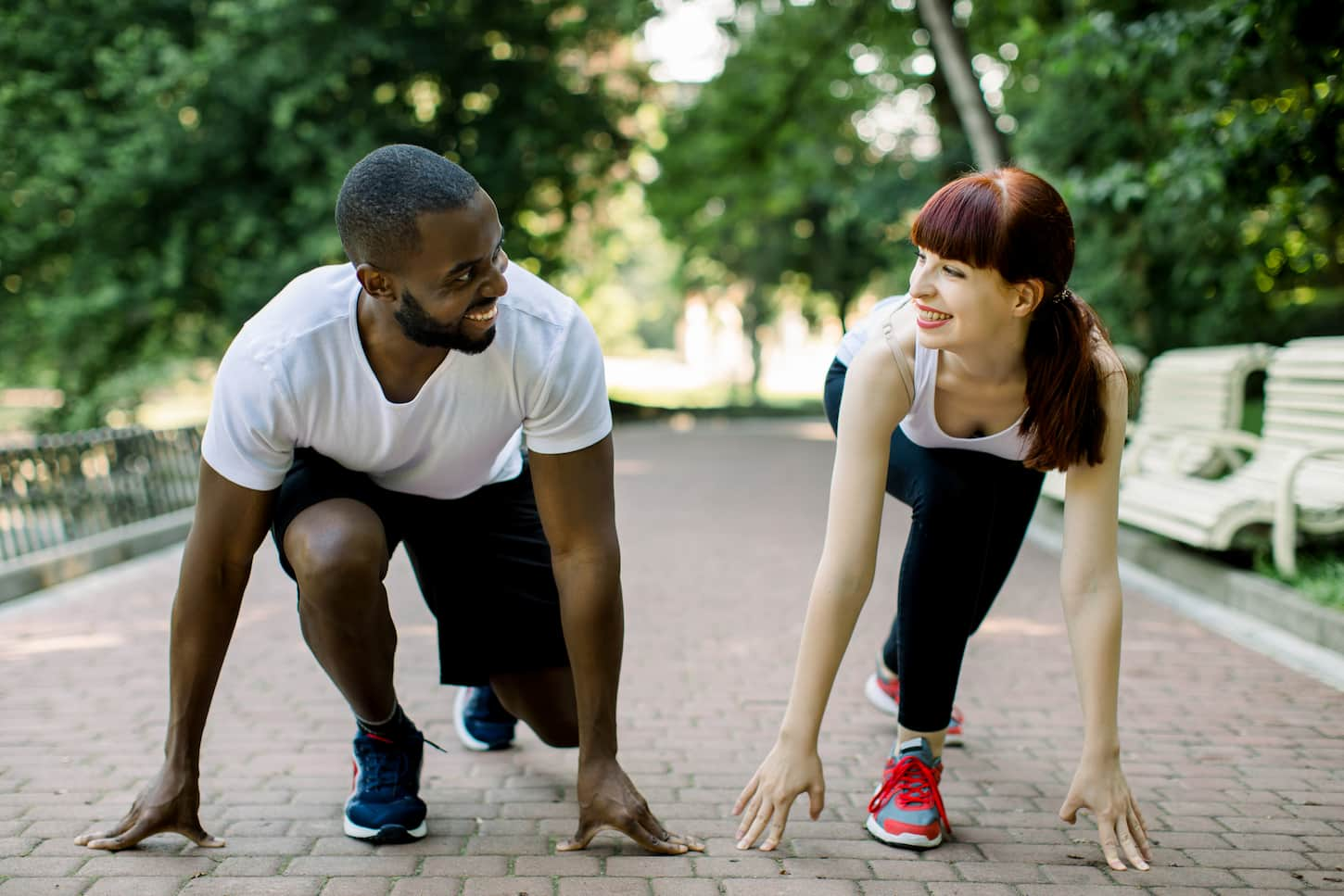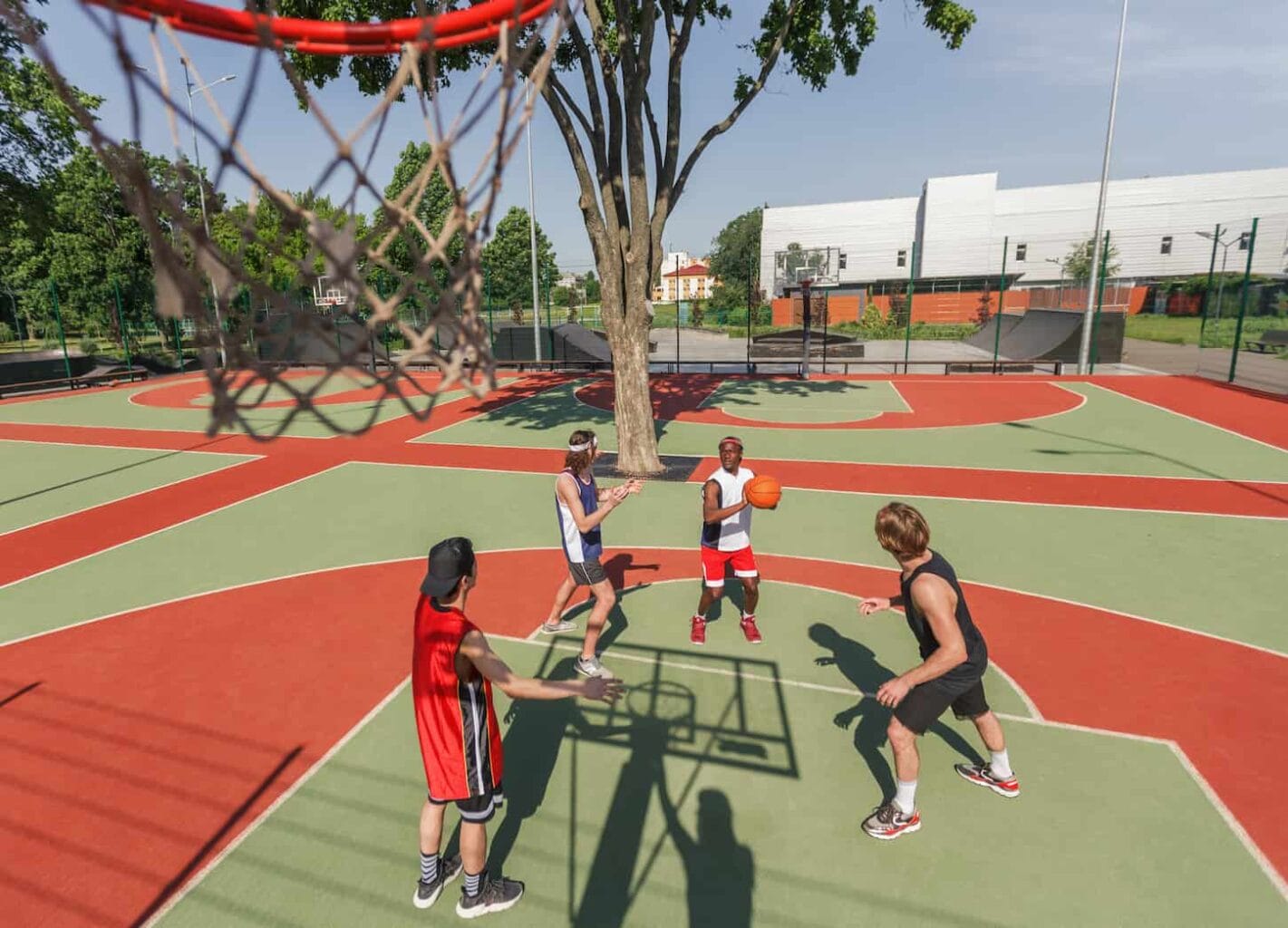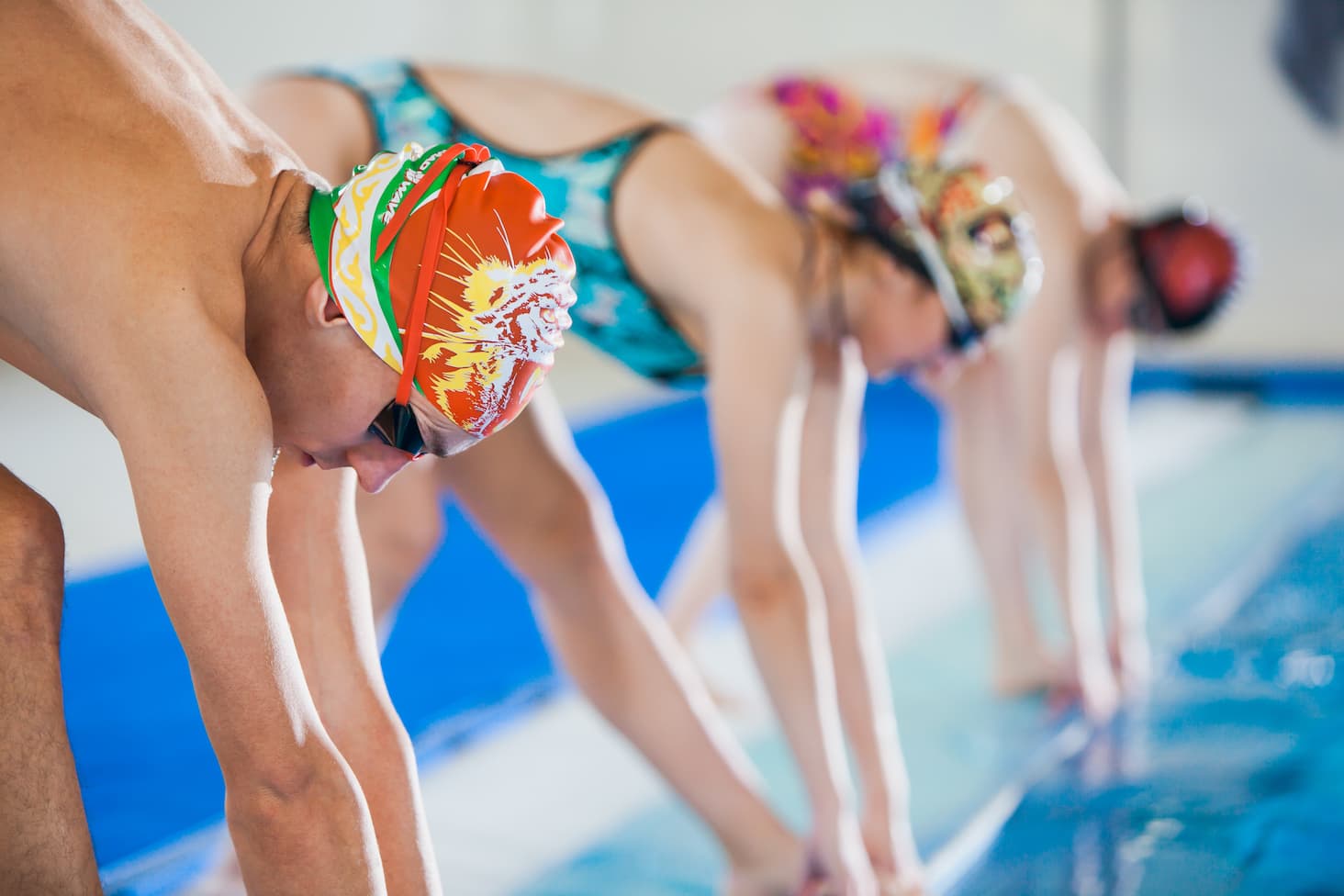We live in a fast-paced society where stress is part of life. It’s healthy in small doses, but too much can cause physical and mental problems. One of the best ways to combat stress is with exercise and to improve the family’s health and well-being.
The best stress-relieving sports are aerobic sports, which get the lungs pumping and the heart racing. Aerobic sports include individual sports such as cycling, swimming, or dancing and team sports such as soccer, basketball, and volleyball.
According to the Centers for Disease Control and Prevention (CDC), adults need 20-30 minutes of exercise daily, and children need 60 minutes. Getting enough exercise is vital because stress is responsible for up to 90 percent of illnesses and prevents the body and mind from functioning well. To know the best stress-relieving sports to try, look at the crucial information below.

How Sports Can Help Relieve Stress
Physical activities like sports stimulate the brain to produce endorphins, our feel-good hormones; they relieve pain and counteract the effects of stress. Playing sports also releases tension and gives us a sense of purpose.
Let’s take a closer look at the reasons why sports relieve stress.
Reason #1 – It boosts your mood
Under stress, the body goes into fight or flight mode and releases adrenaline and cortisol. These hormones are useful in the short term if we need to escape from a predator.
But when the body is constantly stressed – it continuously releases cortisol. The result is the body feels like it’s always under threat, which can result in depression and anxiety.
Exercising is the best way to combat stress because it imitates the stress response and helps the body work through it effectively. It also stimulates the body to release endorphins – a natural painkiller. Endorphins also boost mood and counteract the effects of adrenaline and cortisol.
Regular exercise leads to better sleep, which naturally improves mental well-being – and can relieve depression and anxiety. Regular workouts and good sleeping habits inevitably lead to increased self-esteem, improved energy levels, and a better attention span.
Reason#2 – It releases tension
When the body is under stress, it’s in constant fight or flight mode, which affects the muscles, making them knotty and tense. Tense muscles are more prone to injuries and can cause headaches, aching, and stiffness.
It’s hard to feel good with muscle aches and pains, and exercising is the best way to loosen muscles and relieve tension.
Reason #3 – It gives you a purpose
Sports participation gives children a purpose and is a fantastic way to socialize, which is a great way to combat stress. Taking part in sports and being part of a team also teaches self-discipline, increases self-confidence, and boosts self-esteem.
When children are well-socialized and passionate about something, it gives them focus and purpose, which helps to alleviate the stresses of daily life.
Best Individual Sports to Relieve Stress
The best individual sports to relieve stress include swimming, dancing, martial arts, tennis, and running. Individual sports don’t have as many social benefits as team ones, but we can make them more social with classes or competitions.
Here are 6 of the best individual sports to relieve stress.
Swimming
Swimming is one of the best sports to relieve stress because it’s low impact but provides a rigorous, full-body, cardiovascular workout. It gets the heart and lungs pumping because of the gentle water resistance, and the different strokes work out different muscle groups.
Most children and adults love being in the water and find it very calming and soothing, and swimming is ideal for children recovering from injuries or with reduced mobility.
Dancing
Dancing is a fantastic way to beat stress and release tension. It’s also therapeutic because it allows children to be creative, release emotions, and express feelings. Dancing is uplifting and gives a good cardiovascular workout.
It also improves concentration, balance, stamina, coordination, and builds core strength and flexibility.
Running
Running is one of the most popular solo sports, and it’s an excellent stress reliever because it gives an intense cardiovascular workout. It’s a weight-bearing exercise and builds strong bones – it also increases strength and stamina and improves cognitive function.
Running has more mental health benefits when we do it in nature, as opposed to practicing in a city or on a track.
Cycling
Cycling is a low-impact, cardiovascular sport which builds strength and stamina and improves joint mobility. It can also boost the immune system and improve brain and heart health.
The fantastic thing about cycling is that children can use a bike as transport, and it also helps them develop navigational skills. Always ensure children wear a helmet for cycling.
Tennis
Tennis is a popular stress relieving, cardiovascular sport that improves range of motion and eye-to-hand coordination. Playing tennis helps children to develop strategic thinking, improves their problem-solving skills, and boosts brain function.
Tennis is a fantastic way to build strength and muscles and improve agility and balance. You can also play tennis as a team sport in doubles. For more information about tennis, click here.
Martial Arts
Martial arts such as Karate, Aikido, and Judo are some of the best stress-relieving sports because they focus on mindfulness and emotions. They give children a full-body workout and are also a good tool for self-defense.
Martial arts increase flexibility and balance and improve coordination, agility, and reflexes. They also improve focus, boost memory, and encourage self-awareness.
Not only do martial arts help combat stress, but they also build confidence. Here is more in this informative article: Does Martial Arts Help with Confidence?

Best Stress-Relieving Team Sports
The best stress-relieving team sports include soccer, basketball, and volleyball. Team sports are a fantastic way for children to socialize and develop teamwork skills. Taking part in team activities is an excellent way to socialize homeschooled children.
Here is a list of the best stress-relieving team sports.
Soccer
Soccer is one of the most popular stress-relieving team sports because it’s highly aerobic. It improves cardiovascular health, increases stamina and endurance, and helps children to learn how to think on their feet.
Soccer increases muscle and bone strength and improves coordination, flexibility, and reflexes. If you need further information to get your child into soccer, read here.
Basketball
Basketball is a fast-paced, aerobic sport that improves balance, coordination, and stamina. It has similar benefits to soccer, except it builds mobility, strength, and whole-body flexibility with solid core strength. If anyone tries telling you it only builds arm or leg strength, don’t listen. They aren’t playing full-court basketball.
Not that you need to play a full-court press, but rather that playing basketball requires great leg strength (on defense to stay with your person) and arm agility to dribble and pass the ball. Shooting the ball is a full-body workout that starts in the legs, builds through the arms, and requires a strong wrist.
Basketball is ideal for stress because it provides a full-body, cardiovascular workout. It also strengthens muscles and bones and improves motor skills and cardiovascular health.
Volleyball
Volleyball is a rigorous team sport that builds core and upper body strength. It’s a fantastic stress buster because it provides an intense cardiovascular workout. Volleyball builds stamina and endurance and improves hand-to-eye coordination, agility, speed, and balance.
We don’t need to live near a beach to play beach or sand volleyball, but being by the ocean is also very stress relieving.
Don’t live by a beach? Don’t stress. You can play sand volleyball or indoor volleyball, too. Here’s the equipment you’ll need for volleyball.
Softball and/or baseball
Baseball and softball, while different sports require many of the same skills. Both are highly stress-relieving because players focus on several skills: batting, catching and throwing the ball, sprinting, and a team base-running strategy. Each task works out a different muscle group. Both sports can be a fantastic cardiovascular exercise that boosts mood and promotes brain health.
Baseball and softball are fun and rewarding team sports that improve hand-to-eye coordination and motor skills.
Water Polo
Water polo is an intense, fast-paced team sport, but because it’s in the water, it’s low impact and gentle on the body. It’s great for stress because it’s a cardiovascular sport that works the whole body.
It also improves stamina and flexibility. Children must be able to swim to play water polo, and we must always supervise them in the pool.
Fun note: if you’re first learning about water polo, try this fun variation on it; put every player reclined in a floating innertube to play it (feet up; backside in the innertube hole). It won’t be a full-body workout, but players can safely learn the sport and get a good upper-body workout paddling with their arms.
What Sports Are Good for Anxiety?
Any aerobic sport is good for anxiety as long as we do not take it too seriously. Keep it lighthearted. Being too competitive can cause stress, anxiety, and even burnout – which is the opposite of what we want to achieve.
Sports are more stress-relieving when children enjoy them, so choose ones they’re passionate about. If we force a child to practice a sport they don’t enjoy, it will increase their stress and anxiety.
Martial arts can be learned at home, and are fantastic for reducing anxiety because they focus on meditation, emotions, and breathwork.
What are 5 Team Sports Activities that Help to Reduce One’s Stress?
Five team sports activities that help reduce stress are soccer, basketball, baseball, volleyball, and water polo. Taking part in any physical activity can reduce stress, but team sports have the extra benefit of social interaction.
Social interaction is a vital part of a child’s development. Social skills are important life skills, and not developing those properly can cause stress and anxiety. Being part of a team is a fantastic way to build those social skills.
It teaches children about communication, asserting themselves, group dynamics, cooperation, and how to solve and prevent conflicts.

Best products for sports and stress relief
If you’re going to use sports to manage or relieve stress, make sure you’ve got the proper gear. That way, you can not only participate in the sport safely, but you can do so knowing that you’re optimally poised to have fun.
Best Swimming Gear
I’m a huge swimming fan and swam competitively throughout high school. It’s a sport you can do for life, so I’m making sure my kids appreciate being in the water.
- My kids prefer swim goggles like these, as they’re comfortable and adjustable.
- I prefer having two pairs of Swedish goggles (one mirrored and one not) for myself.
- For a swimsuit, get a style that your swimmers are comfortable wearing but are obnoxiously bright. Neons and bright colors show up better against the water, making them a far safer choice for visibility in worst-case scenarios.
Best Helmets
Whether cycling, skating, snowboarding, or rollerblading, you ought to wear a helmet. Make sure you get the right kind of helmet for the activity. The US Consumer Product Safety Commission has a great table outlining which helmets should be used when – along with what standards to look for in each type of helmet. You can check that table out by clicking this link here.
- Once you know which standard to look for, you can find a great bike helmet (like this one) that adheres to those standards.
Best At-Home Sets
These sets are a great way to practice and/or play a game at home, whether using standard rules or playing a pickup game.
- Some great soccer sets, like this one, come with 2 nets, a practice ball, and plenty of cones to practice your dribbling (soccer style) drills.
- This basketball hoop isn’t a standard size, but it’s perfect for an indoor game of hoops, provided nobody goes in for dunks.
- There are great volleyball and badminton combo sets, like this one, so you can play games at home (though the net isn’t always regulation size).
- If you want to add some tennis to the mix, add a couple of rackets (like these budget-friendly tennis rackets) with the net from above. Again, it won’t be regulation perfect. But it’ll be perfect for a backyard pickup game on the lawn.
Key Takeaways and Next Steps
Aerobic sports are the best for relieving stress, which gets the heart and lungs pumping. Fast-paced sports such as soccer and running stimulate the body to release endorphins, the mood-boosting, stress-busting hormone.
Always choose sports your children enjoy because they won’t find much stress relief doing something they don’t like. So, keep the sport lighthearted, don’t let it get too intense or competitive, and practice regularly to reap the stress-relieving benefits.
And for the love of everything sports-related and awesome, don’t be that parent who pushes your kids too hard to be competitive. Sports are awesome, but in the end, they’re a game. People are always more important than the game. If you want to be involved with your children’s sports endeavors, be their coach and focus on teaching them good skills and encouraging them. Read this article next: Do You Have To Volunteer As The Soccer Coach? for more information.
Resources
Learning from your own experiences is important, but learning from others is also smart. These are the sources used in this article and our research to be more informed as a family of sports nuts wannabes.
- “10 Amazing and Evidence-Supported Health Benefits of Running.” Outside Online, 19 Jan. 2022, www.outsideonline.com/health/running/training-advice/running-101/10-amazing-benefits-running-might-not-known.
- Exercise to ease stress and anxiety. health.usnews.com/health-care/patient-advice/articles/best-exercises-to-ease-stress-and-anxiety.
- Belvederi Murri, Martino, et al. “Physical Exercise in Major Depression: Reducing the Mortality Gap While Improving Clinical Outcomes.” Frontiers in Psychiatry, vol. 9, Frontiers Media SA, Jan. 2019, https://doi.org/10.3389/fpsyt.2018.00762.
- Broman-Fulks, Joshua J., et al. “Effects of Aerobic Exercise on Anxiety Sensitivity.” Behaviour Research and Therapy, vol. 42, no. 2, Elsevier BV, Feb. 2004, pp. 125–36. https://doi.org/10.1016/s0005-7967(03)00103-7.
- Childs, Emma, and Harriet de Wit. “Regular Exercise Is Associated With Emotional Resilience to Acute Stress in Healthy Adults.” Frontiers in Physiology, vol. 5, Frontiers Media SA, May 2014, https://doi.org/10.3389/fphys.2014.00161.
- Harvard Health. “Exercising to Relax.” Harvard Health, 7 July 2020, www.health.harvard.edu/staying-healthy/exercising-to-relax.
- “How Much Physical Activity Do Children Need?” Centers for Disease Control and Prevention, 3 June 2022, www.cdc.gov/physicalactivity/basics/children/index.htm.
- “How Much Physical Activity Do You Need?” Centers for Disease Control and Prevention, 3 May 2022, www.cdc.gov/physicalactivity/basics/age-chart.html.
- Karkou, Vicky. “Effectiveness of Dance Movement Therapy in the Treatment of Adults With Depression: A Systematic Review With Meta-Analyses.” Frontiers, 2019, www.frontiersin.org/articles/10.3389/fpsyg.2019.00936/full.
- Marcin, Ashley. “What Are the Top 12 Benefits of Swimming?” Healthline, 9 Sept. 2017, www.healthline.com/health/benefits-of-swimming.
- Rose, M. “Health Related Benefits of Soccer.” Healthy Living, 21 Nov. 2017, healthyliving.azcentral.com/health-related-benefits-soccer-15769.html.
- Salmon, Peter. “Effects of Physical Exercise on Anxiety, Depression, and Sensitivity to Stress.” Clinical Psychology Review, vol. 21, no. 1, Elsevier BV, Feb. 2001, pp. 33–61. https://doi.org/10.1016/s0272-7358(99)00032-x.
- “Top 10 Reasons to Learn Martial Arts.” Kempo Karate – MMA – Self Defense – Level 3 Martial Arts Performance, www.level3karate.com/top-10-reasons-to-learn-martial-arts.
- West, Mary. Can Exercise Help Stress, Anxiety, and Depression? 20 Apr. 2022, www.medicalnewstoday.com/articles/how-does-exercise-reduce-stress.
- “What Is Cortisol?” WebMD, 6 Feb. 2017, www.webmd.com/a-to-z-guides/what-is-cortisol.
